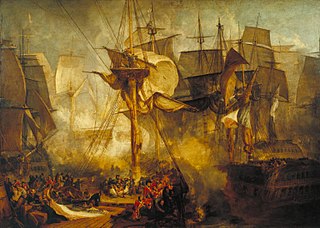| Years in Austria: | 1802 1803 1804 1805 1806 1807 1808 |
| Centuries: | 18th century · 19th century · 20th century |
| Decades: | 1770s 1780s 1790s 1800s 1810s 1820s 1830s |
| Years: | 1802 1803 1804 1805 1806 1807 1808 |

Events from the year 1805 in Austria
| Years in Austria: | 1802 1803 1804 1805 1806 1807 1808 |
| Centuries: | 18th century · 19th century · 20th century |
| Decades: | 1770s 1780s 1790s 1800s 1810s 1820s 1830s |
| Years: | 1802 1803 1804 1805 1806 1807 1808 |

Events from the year 1805 in Austria
| | This section needs expansion. You can help by adding to it. (October 2015) |
| | This section needs expansion. You can help by adding to it. (October 2015) |
| | This section needs expansion. You can help by adding to it. (October 2015) |

1805 (MDCCCV) was a common year starting on Tuesday of the Gregorian calendar and a common year starting on Sunday of the Julian calendar, the 1805th year of the Common Era (CE) and Anno Domini (AD) designations, the 805th year of the 2nd millennium, the 5th year of the 19th century, and the 6th year of the 1800s decade. As of the start of 1805, the Gregorian calendar was 12 days ahead of the Julian calendar, which remained in localized use until 1923.

1746 (MDCCXLVI) was a common year starting on Saturday of the Gregorian calendar and a common year starting on Wednesday of the Julian calendar, the 1746th year of the Common Era (CE) and Anno Domini (AD) designations, the 746th year of the 2nd millennium, the 46th year of the 18th century, and the 7th year of the 1740s decade. As of the start of 1746, the Gregorian calendar was 11 days ahead of the Julian calendar, which remained in localized use until 1923.

1745 (MDCCXLV) was a common year starting on Friday of the Gregorian calendar and a common year starting on Tuesday of the Julian calendar, the 1745th year of the Common Era (CE) and Anno Domini (AD) designations, the 745th year of the 2nd millennium, the 45th year of the 18th century, and the 6th year of the 1740s decade. As of the start of 1745, the Gregorian calendar was 11 days ahead of the Julian calendar, which remained in localized use until 1923.

Eugène Rose de Beauharnais was a French nobleman, statesman, and military commander who served during the French Revolutionary Wars and the Napoleonic Wars. Through the second marriage of his mother, Joséphine de Beauharnais, he was the stepson of Napoleon Bonaparte. Under the French Empire he also became Napoleon's adopted son. He was Viceroy of the Kingdom of Italy under his stepfather, from 1805 to 1814, and commanded the Army of Italy during the Napoleonic Wars. Historians consider him one of Napoleon's most able relatives.

The Battle of Austerlitz, also known as the Battle of the Three Emperors, was one of the most important military engagements of the Napoleonic Wars. The battle occurred near the town of Austerlitz in the Austrian Empire. Around 158,000 troops were involved, of which around 24,000 were killed or wounded. The battle is often cited by military historians as one of Napoleon's tactical masterpieces, in the same league as other historic engagements like Cannae or Gaugamela. The military victory of Napoleon's Grande Armée at Austerlitz brought the War of the Third Coalition to an end, with the Peace of Pressburg signed by the French and Austrians later in the month. These achievements did not establish a lasting peace on the continent. Austerlitz had driven neither Russia nor Britain, whose armies protected Sicily from a French invasion, to settle. Prussian resistance to the growing power of French military invasions in Central Europe led to the War of the Fourth Coalition in 1806.

The War of the Third Coalition was a European conflict lasting from 1805 to 1806 and was the first conflict of the Napoleonic Wars. During the war, France and its client states under Napoleon I opposed an alliance, the Third Coalition, which was made up of the United Kingdom, the Austrian Empire, the Russian Empire, Naples, Sicily, and Sweden. Prussia remained neutral during the war.

The Napoleonic era is a period in the history of France and Europe. It is generally classified as including the fourth and final stage of the French Revolution, the first being the National Assembly, the second being the Legislative Assembly, and the third being the Directory. The Napoleonic era begins roughly with Napoleon Bonaparte's coup d'état, overthrowing the Directory, establishing the French Consulate, and ends during the Hundred Days and his defeat at the Battle of Waterloo. The Congress of Vienna soon set out to restore Europe to pre-French Revolution days. Napoleon brought political stability to a land torn by revolution and war. He made peace with the Roman Catholic Church and reversed the most radical religious policies of the Convention. In 1804 Napoleon promulgated the Civil Code, a revised body of civil law, which also helped stabilize French society. The Civil Code affirmed the political and legal equality of all adult men and established a merit-based society in which individuals advanced in education and employment because of talent rather than birth or social standing. The Civil Code confirmed many of the moderate revolutionary policies of the National Assembly but retracted measures passed by the more radical Convention. The code restored patriarchal authority in the family, for example, by making women and children subservient to male heads of households.

Joachim Murat was a French military commander and statesman who served during the French Revolutionary Wars and Napoleonic Wars. Under the French Empire he received the military titles of Marshal of the Empire and Admiral of France. He was the first Prince Murat, Grand Duke of Berg from 1806 to 1808, and King of Naples as Joachim-Napoleon from 1808 to 1815.

The Battle of Ulm on 16–19 October 1805 was a series of skirmishes, at the end of the Ulm Campaign, which allowed Napoleon I to trap an entire Austrian army under the command of Karl Freiherr Mack von Leiberich with minimal losses and to force its surrender near Ulm in the Electorate of Bavaria.

The Battle of Caldiero took place on 30 October 1805, pitting the French Armée d'Italie under Marshal André Masséna against an Austrian army under the command of Archduke Charles, Duke of Teschen. The French engaged only some of their forces, around 33,000 men, but Archduke Charles engaged the bulk of his army, 49,000 men, leaving out Paul Davidovich's corps to defend the lower Adige and Franz Seraph of Orsini-Rosenberg's corps to cover the Austrian right against any flanking maneuvers. The fighting took place at Caldiero, 15 kilometres east of Verona, during the War of the Third Coalition, part of the Napoleonic Wars.

The Military Order of Maria Theresa was the highest military honour of the Habsburg monarchy, Austrian Empire and Austro-Hungarian Empire.

The Battle of Dürenstein or the Battle of Krems, on 11 November 1805, was an engagement in the Napoleonic Wars during the War of the Third Coalition. Dürenstein, Austria, is located in the Wachau valley, on the river Danube, 73 kilometers (45 mi) upstream from Vienna, Austria. The river makes a crescent-shaped curve between Dürnstein and nearby Krems an der Donau, and the battle was fought in the flood plain between the river and the mountains.

The Ulm campaign was a series of French and Bavarian military maneuvers and battles to outflank and capture an Austrian army in 1805 during the War of the Third Coalition. It took place in the vicinity of and inside the Swabian city of Ulm. The French Grande Armée, led by Napoleon, had 210,000 troops organized into seven corps and hoped to knock out the Austrian army in the Danube before Russian reinforcements could arrive. Rapid marching let Napoleon conduct a large wheeling maneuver, which captured an Austrian army of 23,000 under General Mack on 20 October at Ulm. That brought the total number of Austrian prisoners-of-war in the campaign to 60,000. The campaign is by some military historians regarded as a strategic masterpiece and was influential in the development of the Schlieffen Plan in the late 19th century. Napoleon himself wrote:

The Battle of Schöngrabern, also known as the Battle of Hollabrunn, was an engagement in the Napoleonic Wars during the War of the Third Coalition, fought on 16 November 1805 near Hollabrunn in Lower Austria, four weeks after the Battle of Ulm and two weeks before the Battle of Austerlitz.

The Battle of Amstetten was a minor engagement during the War of the Third Coalition between the First French Empire and the alliance of Austria and Russia. It occurred on 5 November 1805, when the retreating Russo-Austrian troops, led by Mikhail Kutuzov, were intercepted by Marshal Joachim Murat's cavalry and a portion of Marshal Jean Lannes' corps. Pyotr Bagration defended against the advancing French troops and allowed the Russian troops to retreat. This was the first fight in which a major part of the Russian Army opposed a significant number of French troops in the open. The total number of Russo-Austrian troops was around 6,700, while the French troops numbered roughly 10,000 troops. The Russo-Austrian forces suffered more casualties but were still able to successfully retreat.
Events from the year 1795 in the French First Republic.
Events from the year 1859 in France.

The Army of Italy was a field army of the French Army stationed on the Italian border and used for operations in Italy itself. Though it existed in some form in the 16th century through to the present, it is best known for its role during the French Revolutionary Wars and Napoleonic Wars.
Events from the year 1805 in France.

Johann Heinrich von Schmitt was an officer in the Army of the Holy Roman Empire. He was arguably one of the most successful chiefs of staff; he rose to the rank of Feldmarshalleutnant during the French Revolutionary and Napoleonic wars.
![]() Media related to 1805 in Austria at Wikimedia Commons
Media related to 1805 in Austria at Wikimedia Commons